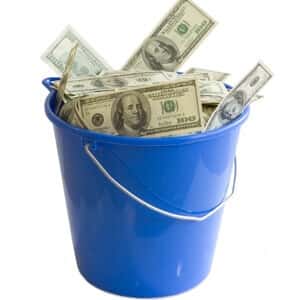
The free market system is supposed to encourage competition. One of the key tenets of capitalism is that prices of products are determined primarily by a competitive marketplace. If company A sells a mousetrap for $5 and company B can make a similar mousetrap that works equally well for less and sell it for $4, then company B would, in theory, capture the market for mousetraps. That’s the way it’s supposed to work. The theory seems to break down when it comes to the pharmaceutical industry.
The Insulin Investigation: Price Collusion?
Two Congressmen have asked the Justice Department and the Federal Trade Commission to look into why insulin prices from different companies have been rising in lockstep. For example, in 2001 the insulin Novolog had a list price of $39.75. So did its competitor Humalog. In 2002, on January 16th, both drugs went up to $41.74. In July they rose to $45.08. In December prices for both brands went to $49.14.
Some people might wonder how these prices could have risen in tandem down to the penny for so long. If the free market were working as intended, there should have been price competition between these competitors.
Even after more than a decade, in November 2015, prices were still extremely close. Novalog’s price rose to $236.70 while Humalog’s price went to $237.00. Theoretically, these companies are in competition but the parallel pricing has Senator Bernie Senators and Representative Elijah Cummings concerned about possible collusion.
Shadow Pricing?
Bloomberg News (May 6, 2015) reported on something called “shadow pricing.” Here is a report that describes a practice that should not exist under true capitalism:
“On May 30 last year, the price for a vial of the blockbuster diabetes medication Lantus went up by 16.1 percent. On the next day, Lantus’s direct competitor, Levemir, also registered a price increase — of 16.1 percent.
“The pattern repeated itself six months later when Lantus, from French drugmaker Sanofi, was marked up 11.9 percent, and Levemir, made by Novo Nordisk A/S, matched again exactly.
“In 13 instances since 2009, prices of Lantus and Levemir — which dominate the global market for long-acting injectable insulin with $11 billion in combined sales — have gone up in tandem in the U.S., according to SSR Health, a market researcher in Montclair, New Jersey.”
What Has Happened to Competition?
We were all taught that under capitalism rivals are supposed to challenge each other on quality, innovation and price. That’s why the makers of computers, smart phones and other electronic equipment are constantly trying to edge out the competition. When it comes to buying a car, people arm wrestle the salesman to get the best deal possible. Consumers are constantly searching for gas stations that charge a little less for a gallon of gas.
The pharmaceutical industry may not be colluding on prices, but they do not seem to be competing either. Prices of brand name insulin products have gone up dramatically in recent years to the point where many people with diabetes have had a hard time paying for their life-saving vials. By the way, the patent on insulin expired over 70 years ago and yet there is virtually no generic competition for some of the most popular insulin products on the market.
Through the Looking Glass:
The pharma industry has responded to charges of price collusion by stating that list prices do not reflect actual cost to payers. Companies insist that they set their prices independently of the competition. They get away with that argument because there is a totally opaque pricing system that involves rebates and reimbursements, which are almost never disclosed. This is an Alice-in-Wonderland world where it is virtually impossible to figure out what anyone pays for anything.
If you find this more than a little aggravating, you are likely to want to read our recently revised Guide to Saving Money on Medicine. This 20-page downloadable PDF booklet will demonstrate how prices for brand name drugs have skyrocketed over the last few decades. You will learn about systemic problems with generic drugs and how to use such medications wisely. You will also discover some secrets about buying medicines from Canada. Here is a link to this downloadable guide.
What Do You think?
Do you find the parallel pricing of insulin too close for comfort? We would like to read your opinion in the comment section below. What do you think about the entire pricing system for prescription drugs? Has capitalism failed consumers when it comes to Big Pharma?

